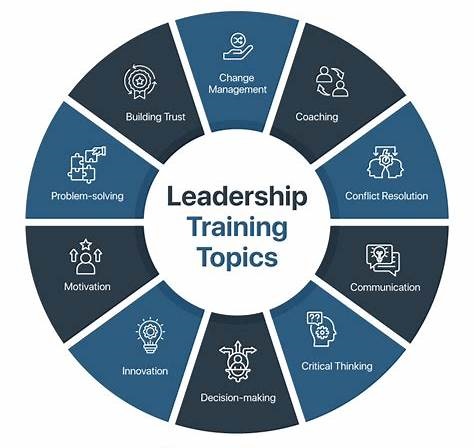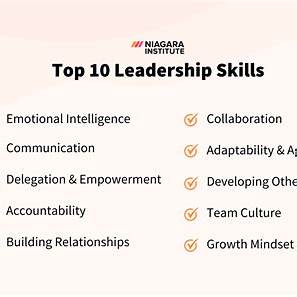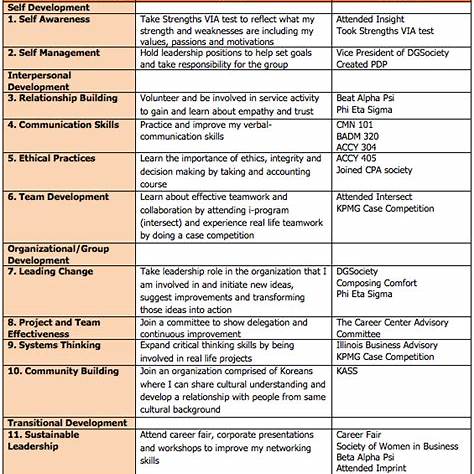Leadership Skills Development
Leadership Skills Development: Leadership isn’t just about holding a title; it’s about inspiring, guiding, and growing with your team. In 2025, effective leadership demands a blend of timeless principles and adaptability to modern challenges. This comprehensive guide delves into the evolution of leadership skills, offering real-world examples and actionable strategies to foster growth in today’s dynamic environment.

Emotional Intelligence (EQ): The Heartbeat of Leadership
What Is EQ?
Emotional Intelligence is the ability to recognize, understand, and manage our own emotions and the emotions of others. It’s the foundation of effective communication, conflict resolution, and team cohesion.
Real-World Example:
Consider a team leader who notices a decline in team morale. Instead of reprimanding, they initiate one-on-one check-ins, offering support and understanding. This approach fosters trust and openness, leading to improved team dynamics.
How to Develop EQ:
- Practice active listening.
- Engage in mindfulness exercises.
- Seek feedback on your emotional responses.
- Attend workshops focused on empathy and emotional awareness.

Adaptability and Agility: Thriving in a Changing World
Why It Matters:
The rapid pace of technological advancements and global events requires leaders to be flexible and open to change. Adaptability ensures that leaders can pivot strategies and guide their teams through uncertainty.
Real-World Example:
During the COVID-19 pandemic, many leaders transitioned their teams to remote work. Those who embraced digital tools and maintained transparent communication helped their teams stay productive and engaged.
How to Cultivate Adaptability:
- Encourage a culture of experimentation.
- Stay informed about industry trends.
- Be open to new ideas and approaches.
- Lead by example in embracing change.

Visionary Thinking: Charting the Course
What Is Visionary Thinking?
It’s the ability to set a clear, inspiring direction for the future and motivate others to work towards it. A visionary leader paints a compelling picture of what’s possible and rallies the team to make it a reality.
Real-World Example:
Elon Musk’s vision for SpaceX to make space travel accessible has driven the company’s innovations and achievements. His ability to communicate this vision has attracted talent and investment, propelling the company forward.
How to Develop Visionary Thinking:
- Engage in strategic planning sessions.
- Encourage creative brainstorming.
- Stay curious and explore new possibilities.
- Communicate your vision clearly and passionately.

Decision-Making: Balancing Logic and Intuition
The Importance of Effective Decision-Making:
Leaders are often faced with choices that impact their teams and organizations. Strong decision-making involves analyzing data, considering various perspectives, and trusting one’s instincts.
Real-World Example:
A product manager decides to launch a new feature based on customer feedback and market research. The decision, though risky, leads to increased user engagement and satisfaction.
How to Enhance Decision-Making Skills:
- Gather and analyze relevant data.
- Consult with team members and stakeholders.
- Reflect on past decisions and their outcomes.
- Practice making decisions in low-stakes situations.
Communication: The Bridge Between Intent and Action
Why Communication Is Key:
Effective communication ensures that messages are conveyed clearly and understood by all. It involves not just speaking but also listening, interpreting non-verbal cues, and providing constructive feedback.
Real-World Example:
A manager holds regular team meetings to discuss goals, challenges, and successes. This open communication fosters a sense of belonging and alignment within the team.
Tips for Improving Communication:
- Be clear and concise in your messages.
- Encourage open dialogue and feedback.
- Be mindful of non-verbal communication.
- Adapt your communication style to your audience.
Delegation: Empowering Others
The Art of Delegation:
Delegation is entrusting tasks to others, allowing leaders to focus on strategic priorities while developing their team’s skills and confidence.
Real-World Example:
A team leader assigns a complex project to a capable team member, providing guidance and support. The team member successfully completes the project, gaining confidence and experience.
How to Delegate Effectively:
- Identify tasks that can be delegated.
- Choose the right person for the task.
- Provide clear instructions and expectations.
- Offer support and resources as needed.
Conflict Resolution: Turning Challenges into Opportunities
Understanding Conflict Resolution:
Conflicts are inevitable in any team. Effective leaders address conflicts promptly and constructively, turning potential disruptions into opportunities for growth.
Real-World Example:
Two team members disagree on the approach to a project. The leader facilitates a discussion, helping them understand each other’s perspectives and reach a mutually agreeable solution.
Strategies for Conflict Resolution:
- Address conflicts early before they escalate.
- Listen to all parties involved.
- Encourage empathy and understanding.
- Collaborate on finding a solution.

Coaching and Mentorship: Developing Future Leaders
The Role of a Coach:
Coaching involves guiding individuals to achieve their personal and professional goals. Mentorship provides support and advice based on experience.
Real-World Example:
A senior leader mentors a junior employee, offering advice on career development and providing opportunities for growth. The mentee progresses in their role and contributes more effectively to the team.
How to Be an Effective Coach or Mentor:
- Build trust and rapport.
- Set clear goals and expectations.
- Provide constructive feedback.
- Encourage continuous learning and development.
Integrity and Ethical Leadership: Building Trust
Why Integrity Matters:
Leaders who act with integrity and uphold ethical standards foster trust and respect within their teams and organizations.
Real-World Example:
A CEO admits to a mistake and takes responsibility, demonstrating accountability and transparency. This action strengthens the organization’s reputation and trustworthiness.
Ways to Uphold Integrity:
- Be honest and transparent in your actions.
- Make decisions based on ethical considerations.
- Hold yourself and others accountable.
- Foster a culture of integrity within your team.

Strategic Thinking: Aligning Actions with Goals
Understanding Strategic Thinking:
Strategic thinking involves analyzing situations, considering long-term goals, and making decisions that align with the organization’s mission and vision.
Real-World Example:
A company shifts its focus to sustainable products in response to market demand and environmental concerns, aligning its strategy with emerging trends.
Tips for Developing Strategic Thinking:
- Analyze industry trends and data.
- Set long-term goals and objectives.
- Align team efforts with organizational strategy.
- Be adaptable to changes in the environment.
Conclusion
Leadership is a dynamic and evolving skill set. By focusing on emotional intelligence, adaptability, visionary thinking, decision-making, communication, delegation, conflict resolution, coaching, integrity, and strategic thinking, leaders can navigate the complexities of 2025 and beyond. Remember, effective leadership is not about perfection but about continuous growth and learning.
Free Here: Lurah 777 APK
